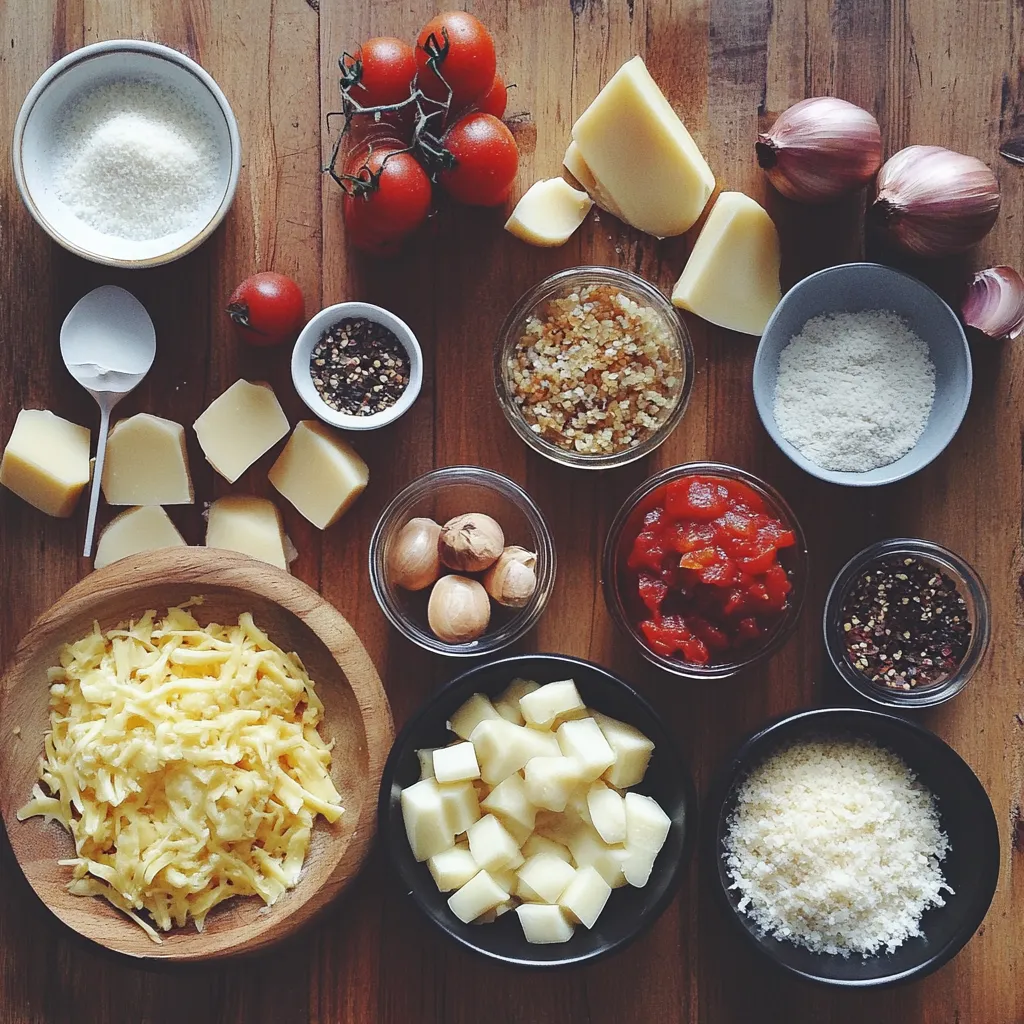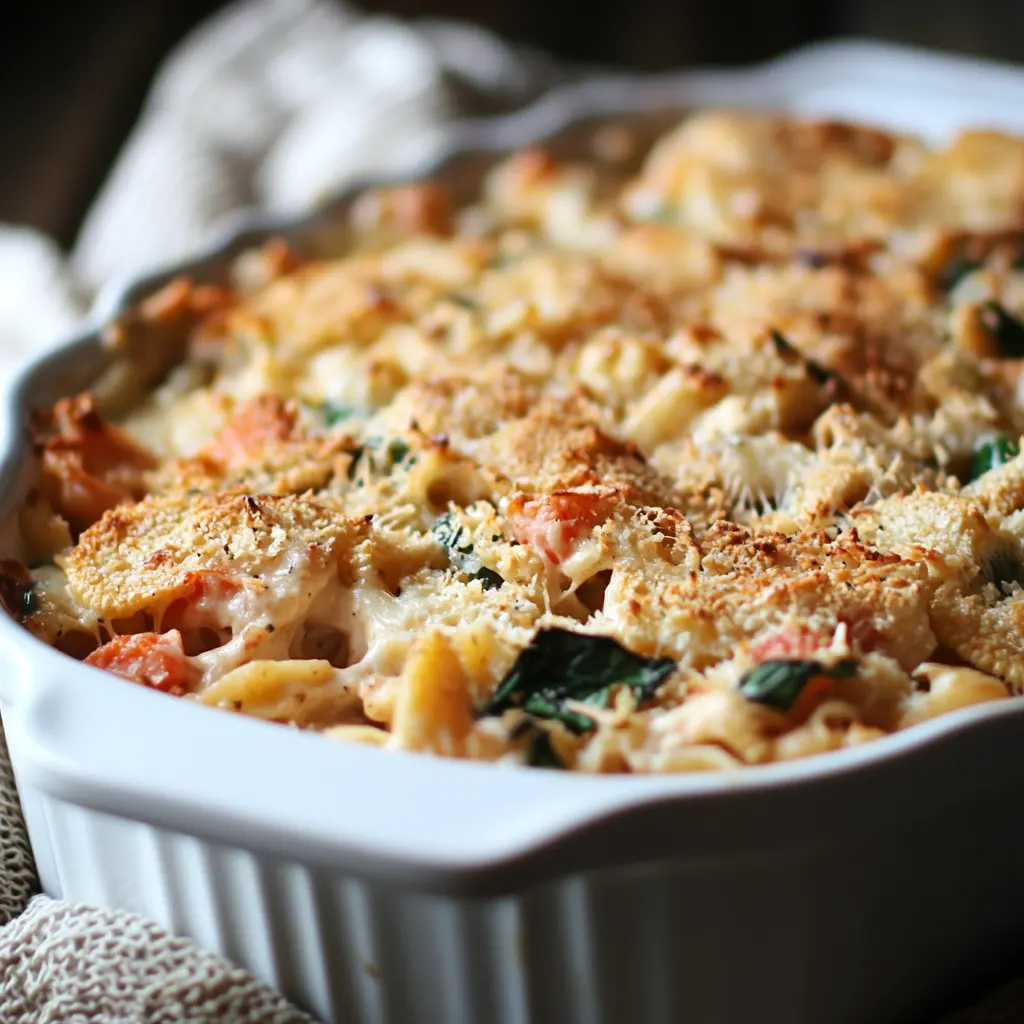What’s in a casserole? This timeless comfort food brings together a medley of flavors and textures in a single dish, making it a favorite across cultures and occasions. In this article, we delve into the essential components, preparation techniques, and cultural significance of casseroles, exploring why they remain a beloved staple in kitchens worldwide.
The Essential Ingredients of a Casserole
When addressing the question, What’s in a casserole?, the ingredients can vary greatly based on regional traditions and personal tastes. Despite these variations, most one-dish meals share a set of core components that make them universally loved.
- Start with a Starch Base: The foundation of most recipes includes starches like pasta, rice, or potatoes. These ingredients provide structure and help carry the dish’s flavors.
- Add Protein for Substance: Whether you choose chicken, beef, or plant-based alternatives like tofu or lentils, the protein layer adds heartiness and depth to the dish.
- Incorporate Vegetables for Balance: Ingredients such as broccoli, peas, or carrots bring color, texture, and essential nutrients to the mix.
- Bind with a Savory Sauce: A creamy or flavorful sauce ties everything together, ensuring each bite is cohesive and satisfying.
- Top for Extra Flair: Finishing touches like cheese, breadcrumbs, or fresh herbs add a layer of crunch or melt-in-your-mouth richness, making the dish irresistible.
Each of these components contributes to the dish’s adaptability, making it a staple across cuisines and occasions.

Exploring the Different Types of Casseroles
The question of what’s in a casserole becomes even more intriguing when exploring the wide range of options available. These dishes vary not only in flavor but also in their suitability for different meals and dietary preferences.
- Start Your Day Right with Breakfast Dishes: Morning-friendly options often include a combination of eggs, sausage, and hash browns, delivering a hearty start to the day.
- Vegetarian Varieties for Plant-Based Eaters: Loaded with fresh vegetables, beans, and grains, these meals are perfect for those who prioritize plant-based eating without sacrificing flavor.
- Coastal Inspirations with Seafood Creations: For those who enjoy oceanic flavors, combinations featuring shrimp, crab, or white fish offer a fresh and unique twist.
- End on a Sweet Note with Dessert Bakes: If you’re in the mood for something sweet, dishes like bread pudding or fruit cobblers turn this concept into a decadent treat.
Whether you’re craving something savory or sweet, there’s an option to suit every occasion and preference. These versatile meals ensure that everyone finds a version they love, making them a timeless choice for gatherings or solo dining alike.
How to Build the Perfect Casserole
Building the ideal casserole begins with understanding what’s in a casserole. Follow these steps for foolproof results:
- Layer Smartly: Start with a sturdy base, add a protein layer, and top with sauce.
- Season Generously: Ensure each layer is seasoned to avoid blandness.
- Balance Textures: Combine creamy sauces with crunchy toppings for variety.
This method ensures a delicious dish every time.
Tips for Baking a Casserole to Perfection
Perfectly baking a casserole often depends on temperature and timing. Therefore, it’s important to consider what’s in a casserole to make it bake flawlessly.
- First, preheat the oven to ensure consistent heat, which guarantees even cooking throughout.
- Next, bake the casserole covered initially to retain moisture; afterward, uncover it to achieve a golden, crispy topping.
- Finally, use a meat thermometer for casseroles with meat to check the internal temperature and confirm it is fully cooked.
Looking for a creamy, indulgent casserole option? Try our Ultimate Chicken Alfredo Recipe.
Healthier Alternatives for Classic Casseroles
For a nutritious twist, consider how what’s in a casserole can be modified:
- Replace heavy cream with Greek yogurt.
- Swap white pasta for whole grain or zoodles.
- Add more vegetables and reduce cheese or breadcrumbs.
For a vibrant twist, consider adding purple sweet potatoes to your next casserole.
Common Mistakes to Avoid When Making a Casserole
Even seasoned cooks may falter without considering what’s in a casserole. Avoid these pitfalls:
- Skipping the Seasoning: Bland casseroles lack appeal.
- Overloading Ingredients: Too many items can create an unbalanced texture.
- Neglecting Rest Time: Letting the casserole sit after baking helps flavors meld.
Avoiding these mistakes ensures culinary success.
Casserole Storage: Freezing and Reheating Tips
Understanding what’s in a casserole is essential for proper storage:
- Freezing: Cool the casserole completely before freezing to maintain texture.
- Reheating: Use a low oven temperature and cover with foil to prevent drying out.
- Portion Control: Freeze individual servings for quick, convenient meals.
These tips keep the tasting fresh.
Must-Have Tools for Casserole Making
Equipping your kitchen with the right tools can simplify the process of determining what’s in a casserole and preparing it perfectly.
- First, invest in a deep baking dish to layer ingredients evenly, ensuring the casserole cooks uniformly.
- Next, keep a reliable spatula on hand to make serving clean and effortless.
- Additionally, use a food processor to speed up ingredient preparation, saving time and effort.
With these essential tools in your kitchen, you can easily elevate your casserole-making game to the next level.
Popular Casserole Recipes to Try
Still wondering what’s in a casserole? Try these classic recipes:
- Chicken Alfredo Bake
- Shepherd’s Pie
- Tuna Noodle Casserole
- Green Bean Casserole
Each recipe showcases the endless possibilities of making it.
Casseroles Around the World: International Variations
Casseroles transcend borders. When asking what’s in a casserole, global flavors shine:
- French Gratin: Potatoes, cream, and cheese.
- Mexican Enchilada Casserole: Tortillas, beans, and salsa.
- Indian Biryani: Layers of rice and spiced meat or vegetables.
These variations illustrate casseroles’ universal appeal.
Creative Twists on Traditional Casseroles
Creativity thrives when reimagining what’s in a casserole. Some ideas include:
- Swap breadcrumbs for crushed tortilla chips.
- Add fruit like apples or cranberries for a sweet touch.
- Use non-traditional proteins like tofu or tempeh.
Such innovations breathe new life into this classic dish.
Why Casseroles Are Perfect for Any Occasion
Casseroles are versatile enough for casual dinners or holiday feasts. Why? Because it can be adapted to suit any occasion:
- Add luxury ingredients like lobster for formal events.
- Simplify with pantry staples for weeknight meals.
- Serve in disposable trays for potlucks.
Casseroles always fit the bill.
Adapting Casseroles to Fit Dietary Restrictions
Catering to dietary needs begins by understanding what’s in a casserole and making thoughtful adjustments.
- First, use gluten-free pasta to create celiac-friendly options that everyone can enjoy.
- Next, opt for dairy-free alternatives such as almond milk and vegan cheese to accommodate those with lactose intolerance or dairy allergies.
- Finally, select low-carb ingredients like cauliflower rice to fit low-carb or keto diets seamlessly.
By making these simple tweaks, casseroles become accessible and enjoyable for everyone, regardless of dietary restrictions.
Discover gluten-free dinner inspirations, including tips for gluten-free casseroles.
How to Turn Leftovers into a Delicious Casserole
Transforming leftovers into a casserole is a creative and practical way to answer the question, what’s in it? Here’s a simple process to make a tasty dish from what’s already in your fridge:
- Combine Ingredients:
Mix cooked meats, vegetables, and starches like rice, pasta, or potatoes. These components create the base of your casserole. Add any leftover sauces or gravies for flavor. - Add a Creamy Sauce:
Create a quick sauce using cream, milk, or broth. Mix it with shredded cheese, sour cream, or a can of soup to bind the ingredients and add richness. - Top with Cheese or Crunch:
Sprinkle shredded cheese evenly over the top. For added texture, consider breadcrumbs, crushed crackers, or fried onions. - Bake Until Bubbly:
Preheat your oven to 350°F (175°C). Bake the casserole for 25-30 minutes, or until the top is golden and the dish is heated through. - Serve and Enjoy:
Pair your casserole with a fresh side salad or steamed veggies for a balanced meal.
This simple method reduces food waste, saves time, and turns yesterday’s leftovers into a satisfying and creative dish.
What Makes Casseroles a Comfort Food Classic?
Transforming leftovers into a casserole is a simple yet effective way to answer the question, what’s in it? By using ingredients you already have, you can create a new, flavorful dish. Here’s how to do it:
- First, Combine Ingredients:
Start by mixing cooked meats, vegetables, and starches like rice, pasta, or potatoes. These form the base of your casserole. Additionally, you can use leftover sauces or gravies to enhance the flavor. - Next, Add a Creamy Sauce:
Prepare a quick sauce using cream, milk, or broth. Mix it with shredded cheese, sour cream, or a can of soup to bind everything together. This step ensures a creamy texture and rich taste. - Then, Top with Cheese or Crunch:
Evenly sprinkle shredded cheese over the top. Alternatively, add breadcrumbs, crushed crackers, or fried onions for extra texture and crunch. - After That, Bake Until Bubbly:
Preheat your oven to 350°F (175°C). Bake the casserole for 25-30 minutes, or until the top turns golden and the dish is heated through. - Finally, Serve and Enjoy:
Complete your meal by pairing the casserole with a fresh side salad or steamed vegetables for a balanced and satisfying dinner.
This approach not only reduces food waste but also allows you to repurpose leftovers into something exciting and delicious.
FAQs About Casseroles
1. What is the best cheese for casseroles?
Cheddar, mozzarella, Parmesan, and Gruyère are popular options. Cheddar adds sharpness, mozzarella melts smoothly, Parmesan gives a nutty flavor, and Gruyère adds richness. Mixing cheeses can enhance flavor and texture.
2. Can casseroles be made ahead of time?
Yes, you can prepare casseroles a day or two in advance. Assemble the dish, cover it tightly, and store it in the fridge. Bake it just before serving for fresh, warm results.
3. How do you prevent casseroles from drying out?
Ensure there’s enough sauce or liquid in the recipe. Cover the dish with foil while baking and uncover toward the end for browning. Avoid overbaking to keep it moist.
4. Are casseroles freezer-friendly?
Most casseroles freeze well. Use a freezer-safe dish, cool the casserole completely, and seal it tightly. Thaw in the fridge overnight before reheating and baking.
5. What makes a casserole dish different from other baked dishes?
Casseroles combine all components—proteins, vegetables, starches, and sauces—in one dish. This makes them a complete meal with balanced flavors and textures.
6. How do I turn my leftovers into a casserole?
Combine leftovers with a starch (like rice or pasta), a sauce or cheese, and seasonings. Layer them in a dish, top with breadcrumbs or cheese, and bake until bubbly. It’s an easy way to repurpose food!
Conclusion
In the end, what’s in a casserole goes far beyond just the ingredients—it’s about the comfort, creativity, and connection it brings to the table. With its endless adaptability, this classic one-dish meal can suit any occasion, dietary preference, or personal taste. From hearty breakfast bakes to indulgent desserts, these dishes offer something for everyone. By mastering the essentials, exploring diverse types, and following practical tips, you can transform simple ingredients into a satisfying and memorable meal. Whether it’s a family dinner or a festive gathering, these timeless creations continue to warm hearts and fill plates across the globe.

